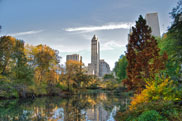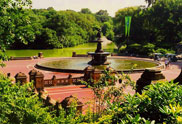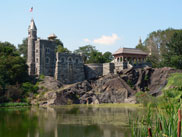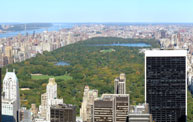Over 200 years ago, with New York City’s population beginning to explode, the grid road system was planned that would cover every acre of Manhattan island. Throughout the early 1800s, the population nearly quadrupled. Rapid construction caused a stark realization: city growth would fill out all of the green space left on the island. Residents were having a more difficult time escaping the hustle of the city, and local officials were determined to preserve some of the island’s natural environment.
Enter Frederick Law Olmsted and Calvert Vaux. After beating out 32 competitors in 1858 for the right to design a park in the city, they developed the ‚ÄúGreensward Plan.‚ÄĚ The plan involved turning a swampy, undesirable area in the center of Manhattan into a carefully designed park with varied landscapes. During its construction, Olmsted and Vaux lived in the park to ensure it was developed according to plan.
Today called Central Park, the 843-acre greenspace receives 42 million visitors a year and is world-renowned for its revolutionary planning. It has served as a model for those in other cities such as San Francisco’s Golden Gate Park and Tokyo’s Ueno Park.
In contrast to the high-rises, high-volume traffic, and high pace of the city surrounding it, the rectangular park, which is 2.5 miles long and half a mile wide, boasts many water features, a castle, stone bridges, boathouses, playgrounds, a museum, rock outcroppings, a zoo, a wildlife sanctuary, natural woods, and an ice-skating rink.
One example of its original design that marvels engineers are its sunken roadways used for city traffic, called ‚Äútranverse roads.‚ÄĚ The Landmarks Preservation Commission reported, ‚ÄúConsidering that these‚Ķroads were built for carriages, carts and drays, people today are amazed at the foresight of those who conceived this feature which serves the heavy flow of motor traffic so well.‚ÄĚ

The Pond in the park’s southeast corner during autumn.
Photo: Ed Yourdon, CC BY-SA 2.0

Bethesda Terrace, which provides a view of The Lake and features a fountain.
Photo: Elisa Rolle, CC BY-SA 3.0

Belvedere Castle, which contains exhibition rooms and an observation deck.
Photo: Stig Nygaard, CC BY-SA 2.0





















